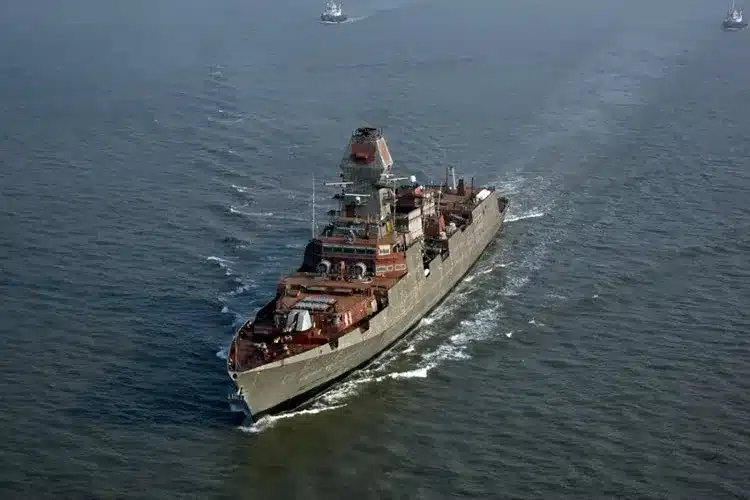INS Mormugao — India’s second stealth destroyer of the P15B class began its sea trial day | Image Source: Ministry of Defence
INS Mormugao — India’s second stealth destroyer of the P15B class began its sea trial on 19 December 2021. She will be commissioned in mid-2022. The vessel is named after the port city of Mormugao in Goa. The date of sea trial is considerably selected on the day when Goa celebrate its 60th Independence Day. On 19th December, Goa celebrates 60 years since it was freed from Portuguese rule. India’s Navy played a big role in the liberation, so dedicating the ship’s name to the maritime state of Goa will not only strengthen the bond between the Indian Navy and the people of Goa, but also link the ship’s identity permanently to the Navy’s critical role in nation-building.
INS Mormugao is the second ship of the Visakhapatnam-class stealth guided-missile destroyers of the Indian Navy. She is being constructed at Mazagon Dock Limited (MDL) and has been launched on 17 September 2016. The ship is expected to get commissioned by Mid – 2022.
About INS Mormugao
INS Mormugao — India’s second stealth destroyer of the P15B class which is also known as Visakhapatnam class destroyers. The Visakhapatnam-class is the most advanced destroyer class ever to be built in India, according to Indian defence officials. Displacing 7,300 tons, the stealth guided missile destroyer has a crew of 50 officers and 250 sailors. It is powered by four gas turbine engines, and capable of reaching a maximum speed of about 30 knots. The ship’s operational range is around 4,000 nautical miles.
Each vessel will measure 163m long and 17.4m wide, with a displacement of 7,300t. The ships will be operated by a crew of 50 officers and 250 sailors. The accommodation and working areas will offer superior ergonomics and habitability. The ship is propelled by four powerful Gas Turbines, in a Combined Gas and Gas (COGAG) configuration, capable of achieving speeds more than 30 knots. The ship has enhanced stealth features resulting in a reduced Radar Cross Section (RCS) achieved through efficient shaping of hull, full beam superstructure design, plated masts, and use of radar transparent materials on exposed decks. Apart from myriad indigenous equipment in the ‘Float’ and ‘Move’ categories, the destroyer is also installed with major indigenous weapons which include: –
- Medium Range Surface-to-Air Missiles (BEL, Bangalore).
- BrahMos Surface-to-Surface Missiles (BrahMos Aerospace, New Delhi).
- Indigenous Torpedo Tube Launchers (Larsen & Toubro, Mumbai).
- Anti-Submarine Indigenous Rocket Launchers (Larsen & Toubro, Mumbai).
- 76mm Super Rapid Gun Mount (BHEL, Haridwar).
Around 65 percent of components of the Vishakhapatnam-class are domestically designed and produced, including 11 of its weapon and associated sensor systems, according to Indian naval officials.

